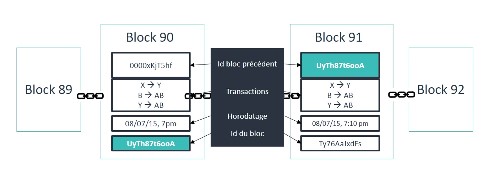BLOG Technoark 2017 Conference – Blockchain, beyond the bitcoin.
and
How applying Blockchain for Enterprise security and data management.

I post a brief personal impression of the TechnoArk Conference 2017 in TechnoArk center of Sierre /Switzerland)
This TechnoArk Center is based on three essentials parts:
• The Ark Accelerator leverages new technologies and guides them to a commercial application. It is also responsible, if necessary, for patenting them.
• The Ark Incubator offers professional coaching to start-up companies. It strengthens the chances of success and promotes their insertion in the economic fabric.
• The Innovation department offers proactive support in the consolidation of your achievements, but especially in the development of new business potential.
Sum-up of this event :
Born with Bitcoins in 2008 and created by Natoshi Sakamoto, Blockchain is a technologic concept, and not a ”software”. Rather it’s a new techno and new decentralized organization.
Blockchain is in same time a peer2peer network, and a distributed database system, which allows to the historic listing of transactions between 2 parts, to become unfalsifiable.
The aim of this event was to show that we can use blockchain in several domains like aeronautic, health, lawyer, energy, eGovernment, gaming and so on.
One presentation per domain was carried out.
Keynotes were organized around case studies, among special interests:
• Fintech : it is seen as a foundation techno but it will take time to be seen as a standard. There’s no real application, all in beta version. Smart contract can be used, they could allow real time transaction, immediate reconciliation between traders and sellers.
• eHealth : blockchain can be used with Hyperledger software on follow up for oncology as it is a long term disease that implies multiple people, doctors, pharmacists, hospital executives…
• eGov : Mike Gault from Guardtime explains how Estonian gov. already used blockchain for Enterprise security and data management.
• Energy : Stephan Tual, (founder of the startup slock.it) has explained how blockchains could be used in the service of renewable energies. Notably with regard to the billing with energy consumed.
• Aeronautic : Stephane Cheickh explained how blockchains could be useful in civil aviation supervision of the use of drones by businesses and individuals, but also in the management of baggage.
• Others keynotes belonged to a very particular field (like gaming, the legal one and so on)
What we heard :
Blockchain is more than a Technology; It’s a strategy …
Blockchain is the most disruptive technology I have ever seen…
Technical part:
As it is very difficult to find precise technical information about blockchains, let me give you some interesting elements to have in memory for the future markets and contracts:
Definition:
A blockchain is a ledger of records arranged in data batches called blocks (or blocs) that use cryptographic validation to link themselves together.
Put simply, each block references and identifies the previous block by a hashing function, forming an unbroken chain, hence the name.
Blocks in details :
Source : Blockchain France ©
The operation of a ledger can be described like this:
• We can immediately see that Blockchain’s ledger doesn’t store “data” itself but fingerprints only.
• The second point proves the existence of an object at precise moment, but not authenticity.
What is important to remember is that a blockchain is characterized by the 4 following features:
• usually contains financial transactions
• is replicated across a number of systems in almost real-time
• usually exists over a peer-to-peer network
• uses cryptography and digital signatures to prove identity, authenticity and enforce read/write access rights
• can be written by certain participants
• can be read by certain participants, maybe a wider audience, and
• has mechanisms to make it hard to change historical records, or at least make it easy to detect when someone is trying to do so
Additionals informations :
A string of blocks is a kind of independent, transparent and permanent database coexisting in several places and shared by a community. That is why it is sometimes called a Mutual Distributed Book (MDL) too.
There is nothing new about MDL, the origins of which date back to the 1976 Diffie-Hellman research paper New Directions in Cryptography. But for a long time they were considered complicated and not quite safe.
It took the Blockchain implementation simpler in Bitcoin to change things. The permanence, security and distributed nature of Bitcoin ensured that it was a currency maintained by a growing community but controlled by absolutely no one and incapable of being manipulated.
Throughout this event, it has been objectively demonstrated that this concept has many advantages.
On the other hand, it is more complicated regarding the Swiss law (and law in general), which is not yet ready to absorb the paradigm shifts induced by this new technology. The impacts on society are also not to be overlooked.
Conclusion:
Today big companies are cautiously launching into the use of this concept because they believe that the first to use the blockchains will be ahead of the competition.
And if this concept was to become dangerous, the money invested would have served to better understand the danger.
Ludovic HAYE
dbi-services consultant




![Thumbnail [60x60]](https://www.dbi-services.com/blog/wp-content/uploads/2022/05/Middleware-TO_Final-wpcf_173x250.png)
![Thumbnail [90x90]](https://www.dbi-services.com/blog/wp-content/uploads/2022/08/DWE_web-min-scaled.jpg)